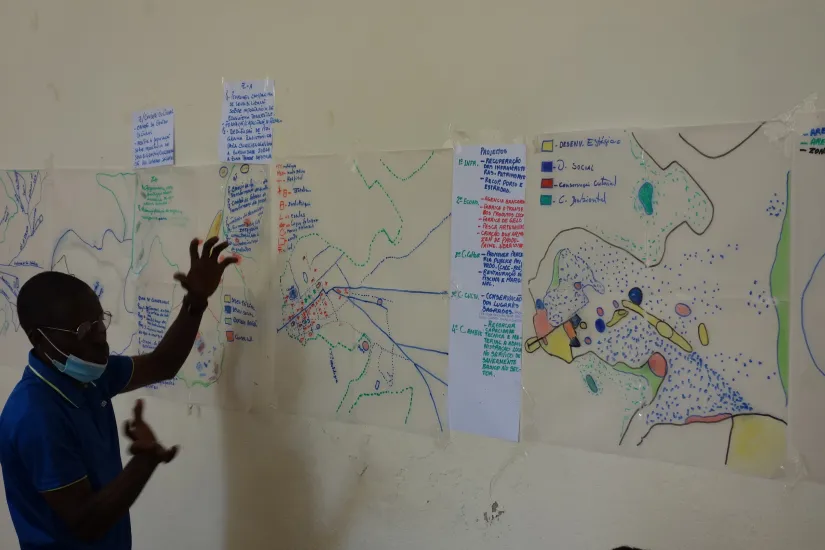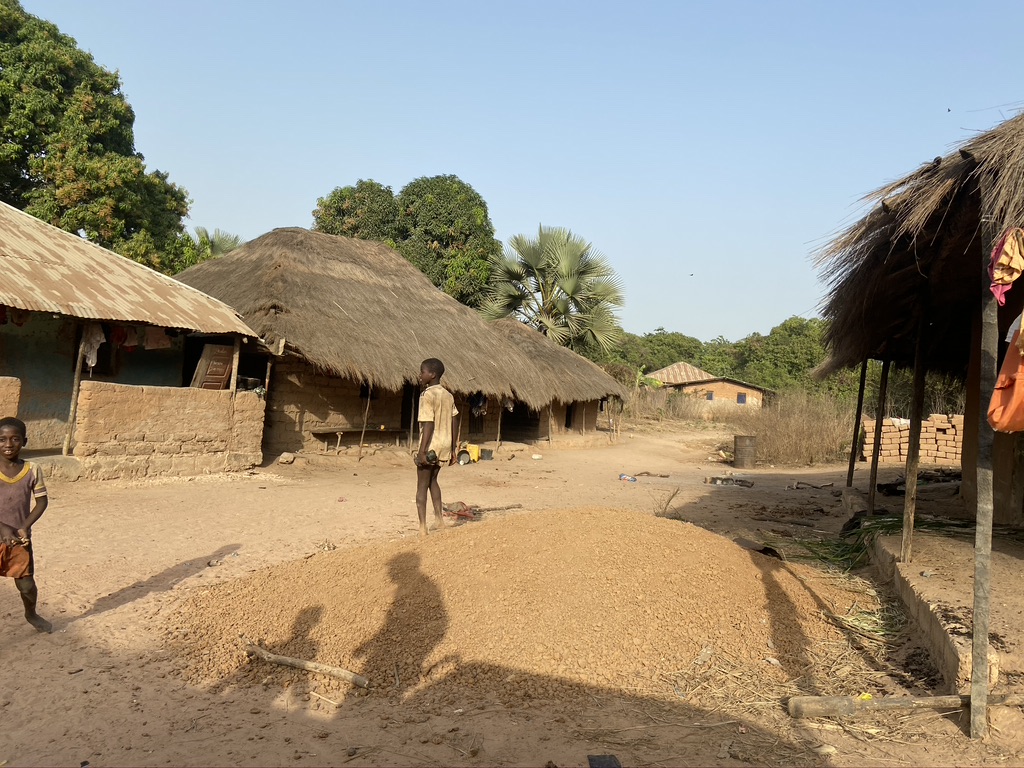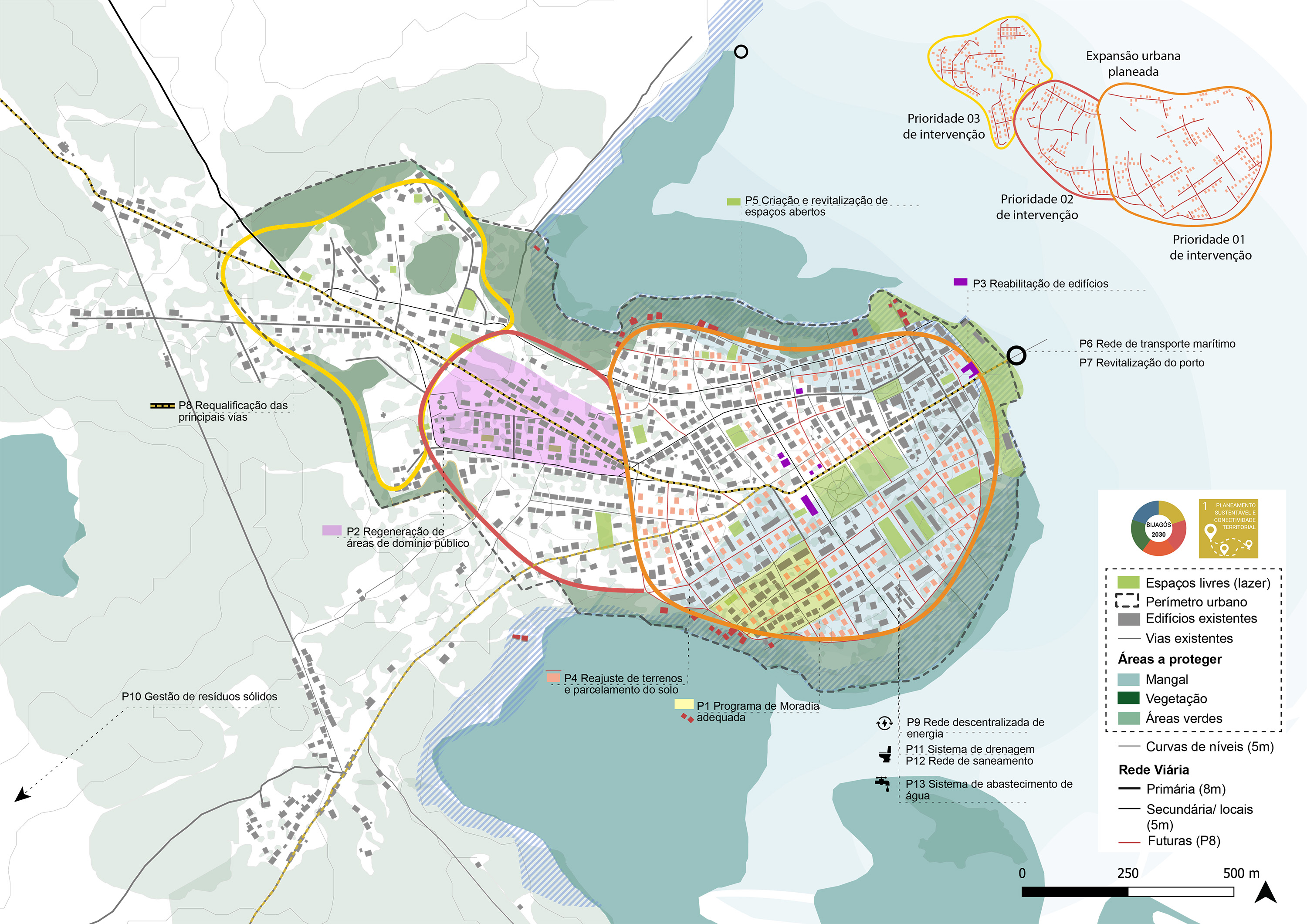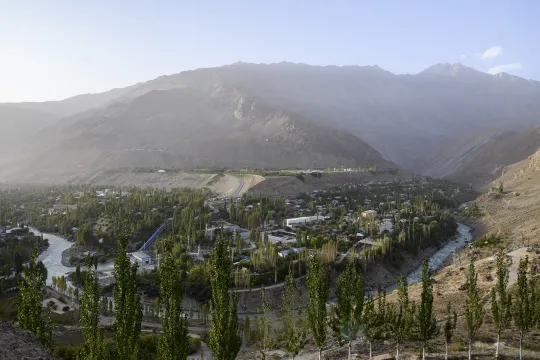
Participatory Mapping in Bolama, Guinea Bissau, UN-Habitat
Introduction
The Bolama Basic Spatial Plan represents the third result of the global project "Strengthening national and regional development planning: A Spatial Development Framework for Guinea-Bissau and a Spatial Development Strategic Plan for the Bolama-Bijagós Archipelago (Bijagós 2030)", financed by the European Union and implemented by UN-Habitat in collaboration with the Government of Guinea-Bissau.
The Bolama-Bijagós Region is an archipelago, located on the coast of Guinea-Bissau, which has more than 80 islands, and is administratively divided into four sectors. Bolama Sector is one of them. The human settlements of the sector are distributed throughout the Galinhas Island, Bolama Island and the continental strip - also called Bolama continental or São João. The capital, Bolama - which became the capital of Guinea-Bissau when it was still a Portuguese colony - is the only human settlement to be considered urban (city).
The main objective of the plan is to identify the main challenges and define a spatial strategy and a set of concrete actions that take into account local opportunities through a comprehensive diagnosis, identifying current land use, proposing appropriate land planning for the city, and providing the basis for the development of legal and planning instruments to ensure its implementation.
Context and background
As in other sectors and cities in Guinea-Bissau, Bolama faces a complex scenario regarding population dynamics, which includes rapid urbanisation and rural-urban migration. Currently, an estimated 62% of the sector's population lives in the City of Bolama –a sharp increase when compared to the 53% urban population in 2009. Moreover, as in other cities across the country, there is a lack of functional services and infrastructure to accommodate the growing demand.
The main challenges and focus areas that guided the Plan were:
- Lack of urban public transportation system and mobility
- Inadequate infrastructure and lack of basic services
- Dispersed growth and disorderly urban expansion
- Vulnerability to climate risks
- Deterioration of historical assets
Plan and process
The planning process comprised a data collection process, followed by an analysis and diagnosis, planning strategies, and finally an action plan. All stages of the plan had a strong component of community participation, grassroots associations, central and regional government agencies, local leaders, traditional power, academic institutions, NGOs, and other stakeholders present in the Sector.

The assessment phase started with a data collection process, which included desk and field research, data modelling in a Georeferenced Information System, and questionnaires with several local players. The alignment of technical and empirical perceptions was evidenced in the validation of the diagnosis in participatory workshops, with an open session for comments and suggestions. By structuring the spatial strategies around the five objectives of Bijagós 2030, the plan did not only reinforce the necessary alignment with the regional plan, but also seeked to align the planning system at different scales and thus contribute to the local implementation of regional, national, and global agendas.
Use of Our City Plans
The use of Our City Plans helped different urban stakeholders better understand urban planning processes and assess at what stage they need to participate to ensure that their voices are heard, and their interests considered as part of the city's vision, policies, strategies, programs, plans and projects.
The main value added by the methodology is the tailored planning process, considering the available resources and capacities of the context through a participatory and capacity building approach. Through the coordination and co-development between UN-Habitat and the Government, each in their capacities have led the planning process with participatory mapping exercises, city reconnaissance and consultative workshops.
Results
The plan is at the stage of operationalization. In addition to the Our City Plans elements already applied within the development of the plan, there are a number of activities and related tools that could support the further operationalization of the Bolama Plan. These include, for example (but not limited to) financial mechanisms, use and explore how different regulatory directives (e.g. FAR, setbacks, mixed land use), as well as processes such as land readjustment, that can mobilise funds to support urban development.


